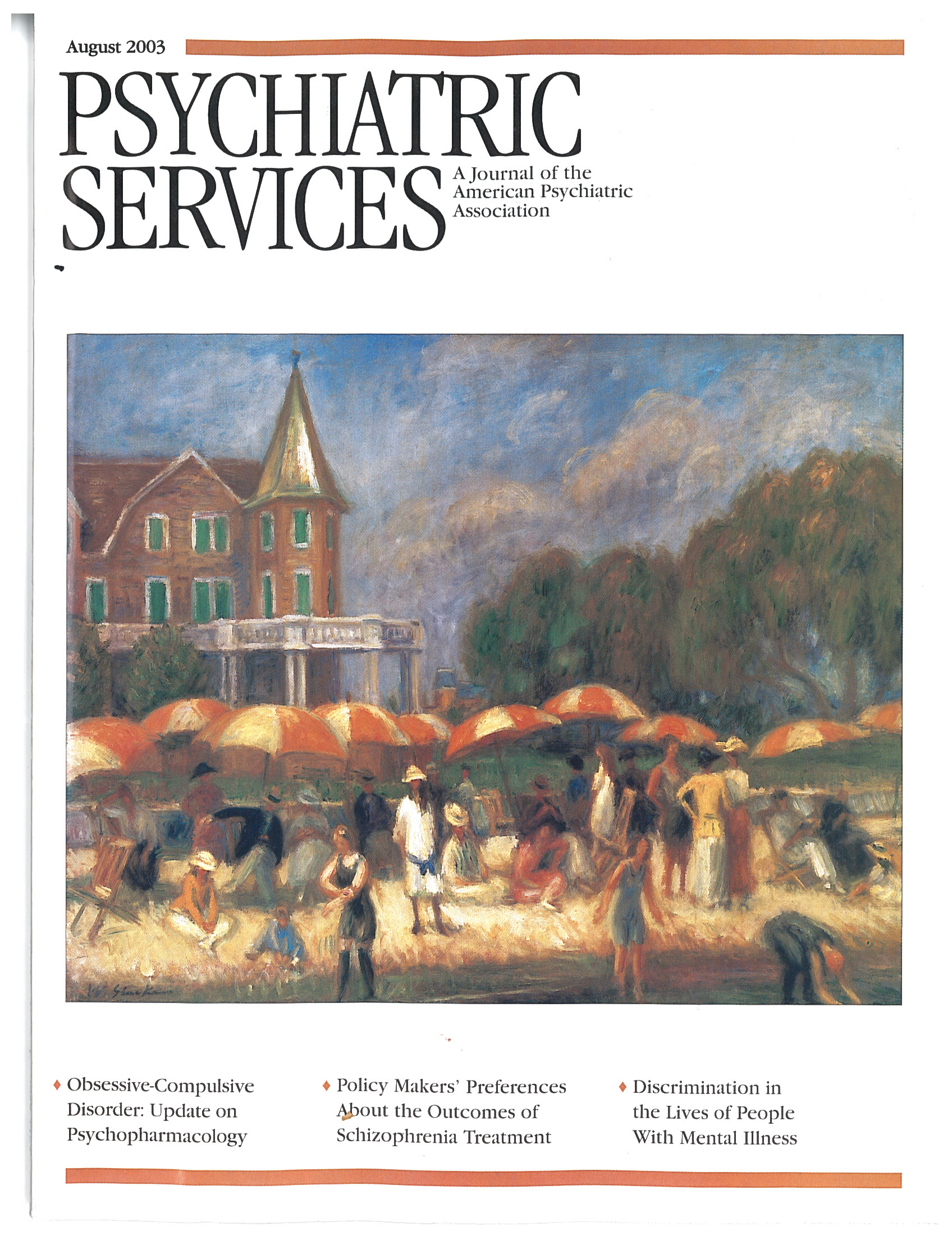Reliability of Information Provided by Patients of a Virtual Psychiatric Clinic
To the Editor: Previous studies have shown that some patients prefer to be interviewed by a computer than by a clinician, especially when sensitive areas, such as suicide, substance abuse, sexual behavior, and HIV-related symptoms, are being assessed. Study participants reported that they felt less embarrassed and more relaxed and that they answered questions more honestly with a computer (1,2,3,4).
Now that the Internet has become part of our lives, an increasing number of people are seeking online psychiatric help. However, the reliability of the information that people provide when visiting a health care Web site has not been investigated. The study reported here investigated the reliability of demographic data provided by patients of a "virtual psychiatric clinic" where more than 100 mental health professionals answer psychiatric questions on line free of charge. The virtual clinic, which is operated by members of the Taiwan Association of Mental Health Informatics, has been described in detail elsewhere (5).
Before visitors' questions are answered, they are required to complete an online registration form, which includes items on demographic characteristics and psychiatric history. Visitors must provide an e-mail address to register. The section about informed consent explains that visitors do not need to give their names and that all information will be kept confidential. They are encouraged to provide accurate information so that the mental health professional can answer their questions appropriately. Two to four weeks later, patients receive an unexpected e-mail asking them to complete an online form assessing their satisfaction with the virtual clinic. The follow-up form asks for the same demographic information as the registration form.
The study examined data from September 1998 to March 1999. During that time 139 patients completed the registration form. Most were female (97 patients, or 70 percent), young (a mean±SD age of 28.0±6.6 years), single (92 patients, or 66 percent), and living in Taipei City (76 patients, or 55 percent). Most had more than an undergraduate education (118 patients, or 85 percent). About half were stably employed (77 patients, or 55 percent), and 26 patients were students (19 percent). Most of them had never visited a real psychiatric clinic before (84 patients, or 60 percent). Forty-three patients had visited a clinic and knew their diagnosis. The most common diagnosis was anxiety disorder (11 patients, or 26 percent), followed by depressive disorder (11 patients, or 26 percent), and bipolar disorder (six patients, or 14 percent).
Forty-seven patients (34 percent) completed the satisfaction feedback form. Patients who had visited a real psychiatric clinic had a higher follow-up response rate than those who had not (44 percent compared with 29 percent) but the difference was not significant. No statistically significant differences were found in age, sex, educational level, marital status, and employment status between those who completed the form and those who did not. The test-retest reliability for all variables was high. The intraclass coefficient for age as measured by analysis of covariance was .661 (F=4.899, df=46, 47, p<.001). Kappa values for other variables were as follows: gender, .835; marital status, .855; place of residence, .894; education level, .876; employment, .765; and previous visit to a psychiatric clinic, .870. Of the 43 patients who reported their previous diagnosis, 31 (72 percent) reported the same diagnosis on the satisfaction feedback form.
The results indicate that patients provided reliable demographic data to obtain online psychiatric help. The patients who had previously visited a real psychiatric clinic may have felt less stigmatized in asking for psychiatric help and thus may have provided more reliable data; if these patients were more likely to provide an accurate e-mail address, they would have been more likely to receive and complete the follow-up survey, which may have introduced bias. The study was also limited by the low follow-up response rate and because the patient information was not corroborated. Some patients may simply not have remembered their previous answers, which would affect the reliability measures.
This study is the first to investigate the reliability of data provided by people who seek psychiatric help online. Further studies of the reliability and validity of online psychiatric assessments are greatly needed for the development of cyberpsychiatry.
The authors are affiliated with the department of psychiatry at Yu-Li Veterans Hospital in Hua-Lien, Taiwan.
1. Slack WV, Hicks GP, Reed CE, et al: A computer based medical history system. New England Journal of Medicine 274:194–198, 1966Crossref, Medline, Google Scholar
2. Lucke SE, Kowaloff HB, Hoff RG, et al: Computer-based interview for screening blood donors for risk of HIV transmission. JAMA 268:1301–1306, 1992Crossref, Medline, Google Scholar
3. Erdman HP, Klein MH, Griest JH, et al: A comparison of two computer-administrated versions of the NIMH Diagnostic Interview Schedule. Journal of Psychiatric Research 26:85–95, 1992Crossref, Medline, Google Scholar
4. Black DB, Belsare G, Schlosser S: Clinical features, psychiatric comorbidity, and health-related quality of life in persons reporting compulsive computer use behavior. Journal of Clinical Psychiatry 60:839–844, 1999Crossref, Medline, Google Scholar
5. Bai YM, Lin CC, Chen JY, et al: The characteristic differences between clients of virtual and real psychiatric clinics in Taiwan. American Journal of Psychiatry 158:1160–1161, 2001Link, Google Scholar



